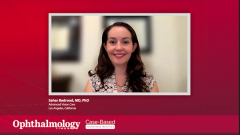
Treatment Algorithm for Open-Angle Glaucoma
An expert discusses how modern glaucoma treatment has evolved from a reactive one-size-fits-all approach of multiple drops followed by major surgery to a proactive, individualized strategy that emphasizes early procedural interventions to minimize medication burden and vision loss.
Sahar Bedrood, MD, PhD, a glaucoma specialist from Los Angeles, discusses the evolution of glaucoma treatment algorithms and the shift toward proactive management approaches. Modern glaucoma care has moved away from the traditional one-size-fits-all approach that relied on multiple eye drops followed by major surgery after vision loss occurred. Today’s treatment strategies emphasize early intervention and personalized care plans tailored to individual patient needs.
The discussion reveals how contemporary glaucoma management prioritizes minimally invasive procedures and sustained drug delivery systems over reactive treatment protocols. Rather than waiting for disease progression, ophthalmologists now implement procedural interventions at earlier stages, including selective laser trabeculoplasty (SLT), angle-based procedures, tube surgeries, and sustained-release implants. This proactive approach aims to minimize medication burden and vision loss while maintaining optimal intraocular pressure control.
Key factors in modern treatment selection include disease severity, patient adherence with medications, and individual response to therapy. The roundtable discussion emphasizes that physicians no longer need to wait until topical drops completely fail before considering procedural interventions. This paradigm shift allows for more flexible treatment thresholds and improved patient outcomes through personalized glaucoma management strategies.
Newsletter
Don’t miss out—get Ophthalmology Times updates on the latest clinical advancements and expert interviews, straight to your inbox.














































